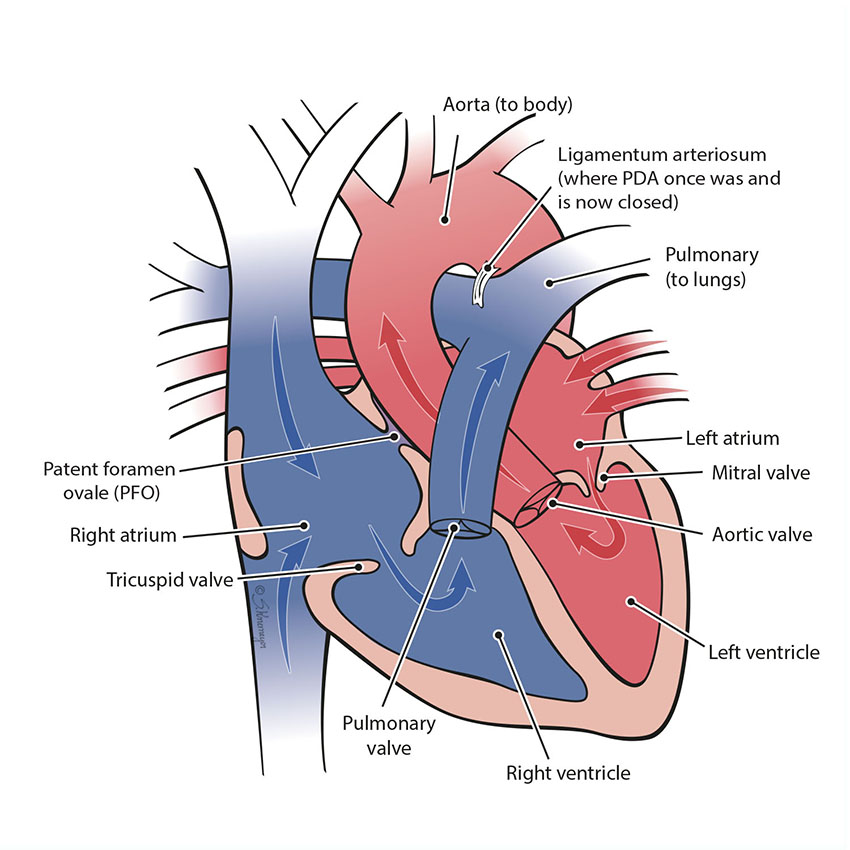Heart Anatomy and Function

Function of the Normal Heart After Birth
In a normal heart, there are four chambers and four valves. The chambers are divided into the top and bottom. The top chambers are called atria and the bottom chambers are called ventricles.
The atria are the “collecting” chambers. The atria collect blood going back to the heart from the lungs or body by way of veins.
The ventricles are the “pumping” chambers. The ventricles are muscle chambers that pump blood out to the body or the lungs by way of the great arteries. The great arteries are the pulmonary artery, which pumps blood to the lungs, and the aorta, which pumps blood to the body.
The right heart is the right atrium and right ventricle. Its job is to collect used blood (low in oxygen) and pump it to the lungs. The lungs will give the blood oxygen (oxygenate) again. The left heart is the left atrium and left ventricle. Its job is to collect blood from the lungs (high in oxygen) and pump it out to the body. The body uses the oxygenated blood to work the muscles, brain and other organs.
There are four valves inside the heart that separate the chambers. These valves are one-way “doors” in the heart. These valves open and shut between the atria and ventricles and between the ventricles and great arteries. The valves push blood forward and keep it from moving backward.
In a developing fetus, several special "fetal" connections exist. For some babies with heart conditions, these fetal connections become important even after baby is born. The patent ductus arteriosus (PDA) is a special fetal blood vessel that sends blood from the mother’s placenta directly to the baby’s body, past the fetal lungs. In babies with a normal heart, the PDA begins to close within a few days after birth because it is no longer needed. However, babies with certain heart defects need the PDA to stay open for blood flow.
The patent foramen ovale (PFO) is a normal fetal opening between the two atrial chambers. Typically, the PFO closes shortly after birth because it is no longer needed. However, babies with certain heart conditions need this PFO to stay open for blood mixing.
